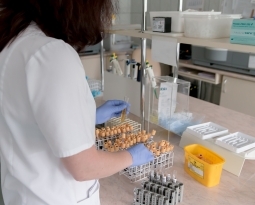Could human gene therapy be the next cancer cure?
Perry Hackett, a researcher at the University of Minnesota, had a significant breakthrough in using DNA to fight cancer. Hackett received significant research and development funding due to his form of cancer treatment using viruses like no other treatments do.
Hackett has invented the Sleeping Beauty Transposon system, which is a basis for many cancer-fighting immunotherapies. Transposons are DNA that are not uniform throughout an organism, a concept which is easily seen throughout Indian corn, where the kernels are multicolored because a DNA element is hopping around the corn genome. It is named Sleeping Beauty because it was a gene that was active 13 million years ago, however went extinct.
Hackett began his research journey almost 40 years ago when he first started genetically engineering larger fish, however now his more recent work can reprogram a person’s immune system to fight cancer. Hackett explains that an immune system has memory, and it can target specific things that are bad for your body by targeting virus-infected cells. His breakthrough was introducing a gene into a cell that will recognize such foreign cells in the body.
Hackett’s virus differs from others in that traditional viruses are expensive to make and take a long time, however, the Sleeping Beauty Transposon is simple enough for an undergraduate student to make.
Hackett calls his research, “One of the grandest Minnesota fishing stories ever,” as initially he was working to find a way to improve the lives of fishermen by genetically engineering fish and eventually this research lead him to immunotherapy and finding a cutting-edge tool to treat cancer.
In addition to treating cancer, Hackett’s research has also lead to further understanding into how cancer progresses and how to correct genetic diseases that people inherit. In the future, therapies based on Hackett’s Transposon system could eliminate or correct the symptoms of inherited diseases.
The university will continue working on this research, as a cancer treatment like this can provide 80% of people who use it with complete recovery or remission of cancer.
As a result of R&D grants, such as the one Perry Hackett received, innovative thinking and research can be rewarded, continue to progress and ultimately save millions of lives.
If your company is undertaking certain R&D activities, you may be eligible to claim the state and federal R&D tax credit, which can then be reinvested into the business. To find out whether your business qualifies, contact Swanson Reed R&D Tax Advisers.

















